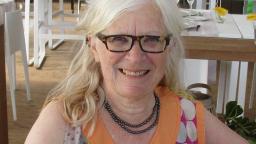Eivor Martinus 1943-2023
by Tom Geddes
Eivor Martinus (née Olausson) was essentially a writer and theatre person, as well as a prolific translator specialising in drama and a part-time teacher of language and literature. Her first novel was written when she was in her twenties, published in 1971 by Rabén & Sjögren. There is a poignancy in naming the title now, so soon after her death: Och den ljusnande framtid var vår (And Our Future Was Full of Promise). It is a light-hearted social comedy of café and theatre life in Gothenburg, where she grew up and where she met the man she was to marry, Derek Martinus. She was a fifteen-year-old schoolgirl; he was twelve years her senior and on a study tour of Scandinavian theatre. At the age of sixteen she was making frequent 36-hour boat crossings from Gothenburg to Tilbury to spend time with Derek in his rather bohemian shared flat in Hampstead. After her first such visit she wrote an article on London theatre life which was published in Göteborgs Handelstidning: her first published article, still at the age of only sixteen, two years before she left school. In 1967 her first short story was published in the journal Vi. She describes some of this in her semi-autobiography Hon sjöng på vinden (She Sang in the Attic, Carlsson Bokförlag, 2019), a book written when she had already been diagnosed with cancer and was having regular chemotherapy to slow its progress. It is a book mainly about her childhood and parental family and the sad inevitability of death. It concludes with the death of her beloved husband after his slow decline into Alzheimer's.
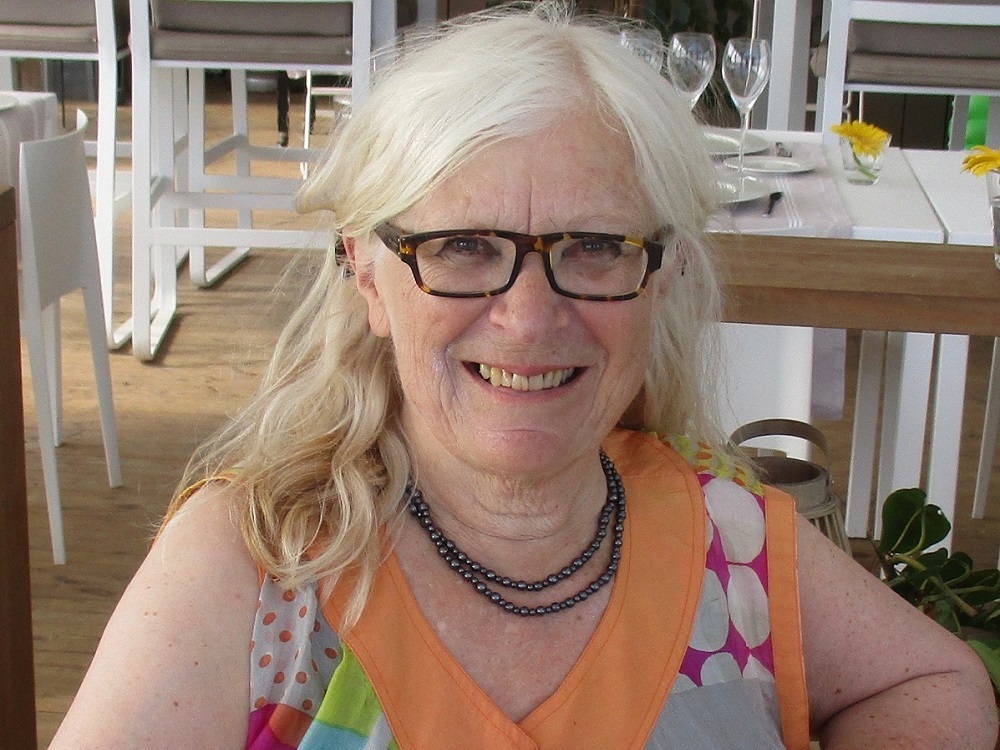
This too she had commemorated in literary form, in an account entitled I går sjöng näktergalen (Yesterday the Nightingale Sang, Carlsson Bokförlag, 2016), to which she appended the subtitle En sann berättelse om kärlek och alzheimer (A True Story about Love and Alzheimer’s), much of which gives snatches of their joint biography in the form of reminiscences told to Derek at his bedside in an attempt to stimulate his fading mind and memory. Having married in 1963, the year after she began her studies of English and Swedish literature at Gothenburg University (she completed her interrupted Gothenburg degree from the UK in the mid-seventies), they went to Northern Rhodesia in 1964, the very year it gained its independence as Zambia, where Derek was judging a theatre competition and then directing a play. Back in Britain, briefly in the New Forest, but soon realising their professional and cultural life had to be based in London, Chiswick became their home for most of their working lives. After Derek's retirement and with both their daughters living elsewhere, they downsized to an apartment overlooking the Thames in Fulham, between the famous football ground and the historic former bishops’ palace. Eivor in widowhood often visited the café in the latter, a venue which always seemed to me to have an ambience more Swedish than English.
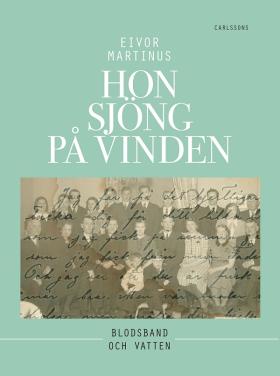
Eivor and Derek's partnership proved to be of inestimable but inevitably ephemeral benefit to Swedish drama in London. Eivor translated fifteen Strindberg plays into English, some for the first time, and all in versions both true to the original and in an idiomatic English that worked well as spoken dialogue on the stage. She was one of those rare translators who could render a text fluently into a language other than her mother tongue but which had become what linguists call her ‘language of habitual usage’. Many of her Strindberg translations live on in book form. She was particularly satisfied with two of the titles she chose: Lady Julie, which she always argued was more appropriate to the theme of the play than the conventional Miss Julie, and Thunder in the Air, well conveying the metaphor of Strindberg's Oväder. She and Derek put on a significant number of plays in London ‘fringe’ theatres over many years, not least the Gate at Notting Hill, Derek directing and Eivor as translator and dramaturg. There are several obituaries of Derek accessible on-line, covering his work as a film and stage actor and BBC and theatre director. He even acted in one of Eivor's own plays, You, at the Cockpit Theatre in 1974. Eivor translated thirty plays in all, including some from English to Swedish. Her work for the stage extended beyond Strindberg to include a dramatisation of Hjalmar Bergman's Markurells, performed in English at the Chelsea Theatre in 1995 and also broadcast by the BBC World Service; and an adaption and translation of Pär Lagerkvist's Barabbas and a translation of Hjalmar Söderberg's Gertrud, both for BBC Radio.
She translated two major novels, the publication of the first of which was the result of her own initiative in pitching the project to Peter Owen, a tactical success achieved by very few translators, who usually have to depend on being the passive recipients of publishers' commissions even when they are themselves part of the process as publishers' readers. That was Bengt Söderbergh's The Mysterious Barricades (Peter Owen, 1986), the poetic musicality of which she rendered into exquisitely appropriate English. She then undertook Reidar Jönsson's My Life as a Dog for Faber (1989), a novel with theatrical potential realised by other hands in film and stage form.
Her desire to write, both objectively and more personally, was lifelong. Even in her schooldays she wrote (unpublished) poetry. In motherhood, she followed the example of many a children's author in publishing a series of four books in Swedish which presumably emanated from stories composed with her own children in mind. All the titles began Pia och Lotta..., her real daughters' names, recounting various imaginary adventures.
For me her magnum opus remains her critical biography of Strindberg, Strindberg and Love, published by the Amber Lane Press in Oxford in 2001, a publisher with whom she had built up a close relationship through some of her drama translations. In this thoroughly well-researched work she argues convincingly against the prevailing view, particularly in the UK, of Strindberg as a misogynist, which she attributed in part to the narrowness of the repertoire here and partly to a lack of recognition of the humorous element in his drama. She pointed out that none of his wives or mistresses ever complained of his attitude towards them. The bad press he often received may have also been in some measure due to his own often inadequate transposition of autobiography into literary form in his writings. This book might have become better known had it been issued by a major publisher. It was well enough respected for it to have been subsequently published in Swedish in Eivor's own translation of her original English edition, under the title Lite djävel, lite ängel: Strindberg och hans kvinnor (Carlsson Bokförlag, 2007).
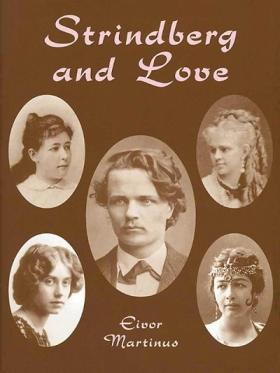
Eivor gradually withdrew from translating into historical research and writing, although she remained the longest-serving chair of the Swedish-English Translators Association (SELTA), from 1996 to 2011, having been persuaded to take on the role after three others had served shorter terms and no other candidates emerged. It was indicative of SELTA's dearth of volunteers in the past, that with the notable exception of Laurie Thompson as the long-term founder-editor of Swedish Book Review, and Henning Koch's later work on setting up a website, there was a general unwillingness to take on an active role. Following Joan Tate's dynamic initial four years of chairmanship, which she relinquished to encourage a rotation of incumbents, there were no other volunteers at all, and Tom Geddes had to act in that capacity for five years despite the unconstitutional clash with his continuing role as secretary and treasurer. Patricia Crampton eventually stepped in for the next four years, after which Eivor began a longer period of service than she had ever anticipated. One of her aims in those years was to encourage others to take a more active part, and in this she appears to have been successful. Some of her own thoughts on SELTA and translating were expressed in her interview published on the SELTA website in 2022. She was also particularly protective of drama, defending the role of the translator against adaptations, all too often by well-known writers basing their versions on the work of others without acknowledgement.
Writing seemed to occupy more of her time as her age increased and health declined. It was not only the autobiographical to which she turned her attention, but also historical biography. Her penetrating and gently feminist account of the little-known life and achievements of the woman we know as Philippa of England, who became Queen of Denmark, Norway and Sweden when she married Eric of Pomerania, King of the Kalmar Union, in 1406, was published in Sweden in 2014, under the title Barndrottningen Filippa och hennes värld (Philippa the Child-Queen and her World) (Carlsson Bokförlag). She followed it with a study of Saint Birgitta and her daughter Katarina, I skuggan av ett helgon (In the Shadow of a Saint) (Carlsson Bokförlag, 2021), a fusion of historical research and personal introspection: enlightening, thought-provoking, but to this atheistic reader a rather unsatisfactory exploration of the religious experience. It is interpretative and analytical of historical facts and characters, but interspersed with musings on the nature of ‘holiness’, even questioning present clergy on their understanding of the concept. Eivor’s own position seems to me that of an agnostic (‘om det nu finns en Gud överhuvudtaget’ – ‘If God does indeed exist’ – she writes at one point). She rounds off the book with an experience of her own in the Russian Orthodox cathedral in Nice. To me it would have been a cultural experience with negative overtones, but to Eivor it was clearly a quasi-religious one whether she fully believed or not.
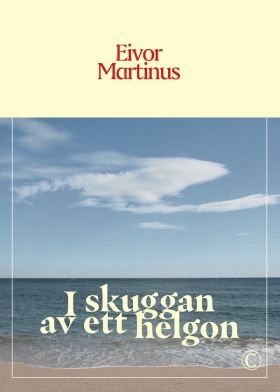
Despite her illness, and well into normal retirement age, Eivor continued her part-time teaching at the South Bank International School in central London's Fitzrovia, an insecure post she held for thirty years. Her enthusiasm about the potential of gifted pupils preparing for the International Baccalaureate in Swedish literature suggested to me that she must have been an inspiring teacher. She participated in the cultural and spiritual life of the Swedish Church in London, even holding a large gathering of many of her friends and colleagues there for her seventieth birthday, which her husband was too unwell to attend or even comprehend; and she belonged to the Anglo-Swedish Society and SveaBritt, a network organisation for professional Swedish women in the UK, of which she was a founder member on its inception in 1981 and which she actively served in office and as a speaker. Coincidentally this was the same year she joined SELTA, in the first year of its existence.
She continued to manifest the sociability and energy which had so characterised her life with Derek among their circles of theatrical and literary friends. Her penultimate decade was devoted to selfless care for Derek, both at home and finally in his nursing home, yet somehow finding time for her research and writing. In the last decade she still had the energy and initiative to undertake promotional tours for her books in Sweden. She also continued her regular summer sojourns at the idyllic cottage on the Blekinge shore where she and Derek had enjoyed so many years of sailing and cycling since 1974, latterly fitting in Swedish medical treatment to supplement that which she was receiving in Britain.
Eivor remained not only stoical in the face of her husband's devastating diagnosis, but also courageous and defiant in respect of her own subsequent prognosis. She displayed such a positive attitude that it almost certainly prolonged her life and enabled her to complete more projects. Her indefatigability was perhaps born in part from the predominantly freelance life she and her husband Derek had led. She is survived by her two daughters and three grandchildren who had become a real focus of pride and interest for her.
Eivor Martinus 1943-2023: Selected Works and Productions
Prose
Och den ljusnande framtid var vår, Rabén & Sjögren, 1971
Pia och Lotta på äventyr i London, Libris, 1974
Pia och Lotta som TV- stjärnor, Libris, 1975
Pia och Lotta i skolan, Libris, 1976
Pia och Lotta lär sig rida, Libris, 1977
Strindberg and Love, Amber Lane Press, Oxford, 2001
Lite djävul, lite ängel: Strindberg och hans kvinnor, Carlssons förlag, 2007
Barndrottningen Filippa och hennes värld, Carlssons förlag, 2014
Om Strindberg, (contributor with two articles in the anthology), Norstedts förlag, 2016
Igår sjöng näktergalen, Carlssons förlag, 2016
Hon sjöng på vinden, Carlssons förlag, 2019
--- Short stories in Tidningen Vi, 1967; Kärlek 7 and 10 , 1967 and 1968
Plays
You, produced at the Cockpit Theatre, London, 1974
Kvinnohataren, Strindberg Museum , 1984
The Misogynist, Echo Stage Company, New York, 1985
Armour of Love, Women International Playwrights’ conference, Ireland, 1996
Translations of Plays
- by Strindberg:
Motherly Love, Pariah, The First Warning, Amber Lane Press, 1987
Thunder in the Air, Absolute Press, 1989
The Great Highway, Absolute Press, 1990
Chamber Plays, Absolute Press, 1991 (After the Fire, The Pelican, The Ghost Sonata, The Black Glove)
The Father, Lady Julie, Playing with Fire, Amber Lane Press, 1998
- by other writers
A Matter of the Soul by Ingmar Bergman, BBC Radio 3, 1990 and later published in New Swedish Plays, 1992
League of Youth by Henrik Ibsen, Guildhall School of Music and Drama, 1993
Barabbas by Pär Lagerkvist, BBC Radio 4, 1993. Later performed in the Swedish Church, London, Easter 2012 and 2014
Gertrud by Hjalmar Söderberg, BBC World Service, 1995
Markurells by Hjalmar Bergman, BBC World Service and Chelsea Theatre, 1996
A God in Disguise by Hjalmar Gullberg, performed in concert at The Guildhall, London 1996
One Night in February by Staffan Göthe, Six Contemporary Plays, 2008, Swedish Book Review, 1996, Replay Productions, 2001
A Tale of a Manor by Selma Lagerlöf, a stage version, Borås Teaterbiennalen, 2009
Translated novels
My Life as a Dog by Reidar Jönsson, Faber&Faber, 1986
The Mysterious Barricades by Bengt Söderbergh, with a foreword by Eivor Martinus, Peter Owen, 1987
Translations and Adaptations into Swedish
Räven (Volpone) by Ben Jonson, produced at Borås Civic Theatre, 1980
Den lönsamme trashanken (The Ragged-Trousered Philanthropist) by Stephen Lowe, UDG-teatern Blekinge, 1989
Den kortaste dagen (Mad Forest) by Caryl Churchill, Malmö Teaterhögskola, 1991
Skomakarens festdag (A Shoemaker’s Holiday) by Thomas Dekker, Gävle Folkteater, 1991
Historien om en soldat (A Soldier’s Tale) by Ramuz, Lyckå Chamber Music Festival, 1992
Trollflöjten, (The Magic Flute) a concert version Lyckå Chamber Music Festival, 1998
Prizes and Awards
British Comparative Literature Association, 1st Prize in the Swedish category, 1993
Swedish Academy of Letters, 1994
Swedish Writers’ Union 1994
SWEA scholarship, 1994
Fotokopieringsfonden 1994 and 2017
Bursary to Grez-sur-Loing, 2018
Several bursaries from the Swedish Writers’ Union
